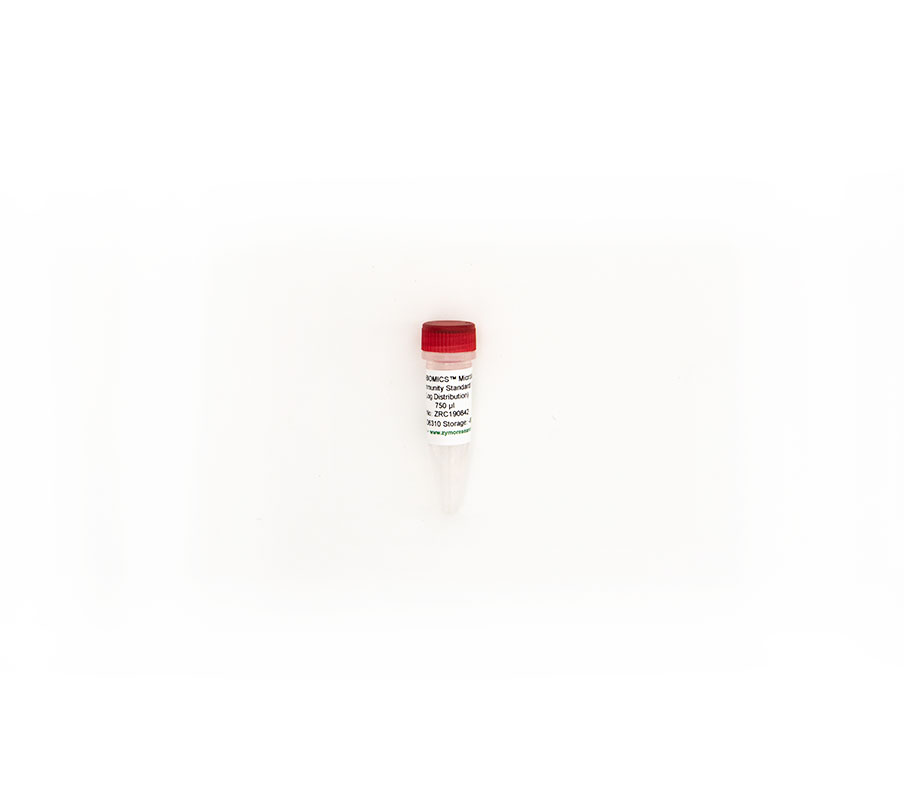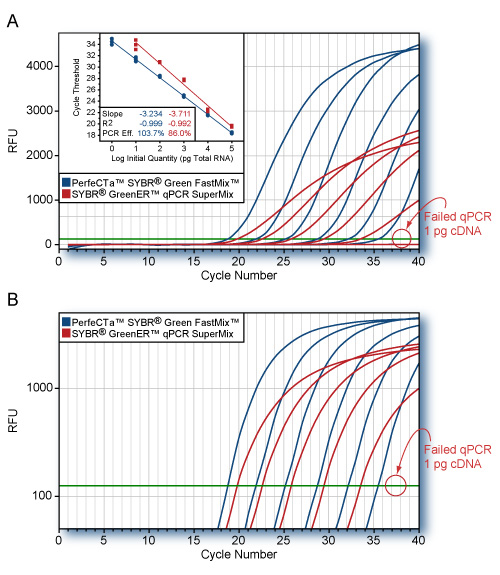ZymoBIOMICS Microbial Community Standard II (Log Distribution)
| Cat# | Name | Size |
|---|---|---|
| D6310 | ZymoBIOMICS Microbial Community Standard II (Log Distribution) | 10 Preps |
Documents
Description
Highlights
- Log abundance distribution: assess detection limit over a broad range (102 to 108 cells)
- Accurate composition: assess the accuracy of microbiome measurements
- Microbiomics QC: ideal for quality control of microbiome measurements
Description
ZymoBIOMICS Microbial Community Standard II (Log Distribution) is a mock microbial community consisting of eight bacterial and two fungal strains. This microbial standard can be used to assess the performance of microbiomics workflows and can also be used as a positive control for routine sequencing. Cells of the ten microbes were mixed in a log-distributed abundance, which allows the user to easily assess the detection limit of their microbiomics workflow. 75 µl of the standard contains about ~100 cells of Staphylococcus aureus, the organism of lowest abundance. If needed, the standard can be spiked into a sample matrix (e.g. soil and blood) to mimic real samples of interest. Theoretical Composition Based on Genomic DNA: Listeria monocytogenes – 89.1%, Pseudomonas aeruginosa – 8.9%, Bacillus subtilis – 0.89%, Saccharomyces cerevisiae – 0.89%, Escherichia coli – 0.089%, Salmonella enterica – 0.089%, Lactobacillus fermentum – 0.0089%, Enterococcus faecalis – 0.00089%, Cryptococcus neoformans – 0.00089%, and Staphylococcus aureus – 0.000089%.
Applicable For
NGS, microbiomics, metagenomics.
Processing Volume
75 µl per preparation.
Purity
Contains < 0.01% foreign microbial DNA.
Sample Source
Eight bacteria (3 Gram-negative and 5 Gram-positive) and 2 yeasts.
Yield
Approximately 220 ng DNA per preparation.
 |
94 / 100 Bioz Stars |
Evaluation of DESS as a storage medium for microbial community analysis
A ZymoBIOMICS Microbial Community Standard (Zymo Research Corporation, Irvine, CA, USA) composed of five Firmicutes (Gram positive) and three Proteobacteria (Gram negative) was used to precisely test DESS’s ability to preserve microbiome DNA.. Although not as diverse as T.
Cloacal and Ocular Microbiota of the Endangered Australian Northern Quol…
Microorganimsm – Published 12 Jul 2018
See supplementary methods for a detailed PCR protocol ( ).. Sequencing controls included DNA extraction process negatives, PCR negatives, and two mock community standards, the even mock community from the Human Microbiome Project ( https://www.hmpdacc.org/HMMC/ ) which is a defined mixture of DNA from of 21 bacterial and one yeast species, and the Zymobiomics microbial community DNA standard (Zymo Research, D6305, Irvine, CA, USA) which contains eight bacterial and two yeast genomes.. PCRs from each sample were pooled equally by molarity.
Evaluating Established Methods for Rumen 16S rRNA Amplicon Sequencing Wi…
Front Microbial – Published 25 Jun 2018
n order to replicate the DNA extraction protocol identically to our rumen extraction protocol, the ZymoBIOMICSTM Microbial Community Standard (Zymo Research Corp., Irvine, CA, United States) was diluted in a 2-mL microfuge tube (DNA/RNA/DNase/RNase-free; Merck KGaA, Darmstadt, Germany) with molecular grade phosphate buffered saline (PBS; Merck KGaA, Darmstadt, Germany), and the tube and its contents were snap frozen in liquid nitrogen.. The frozen tube contents were then homogenized to a fine frozen powder under liquid nitrogen using a pestle and mortar and the frozen powder was stored
- Catalog#: D6310
- Package Length (in Inches): 0
- Package Width (in Inches): 0
- Package Height (in Inches): 0
- Package Weight (in Pounds): 0.000220462
- Size: 10 Preps
- Unit Standard: Metric
- Volume Units: Milliliters









